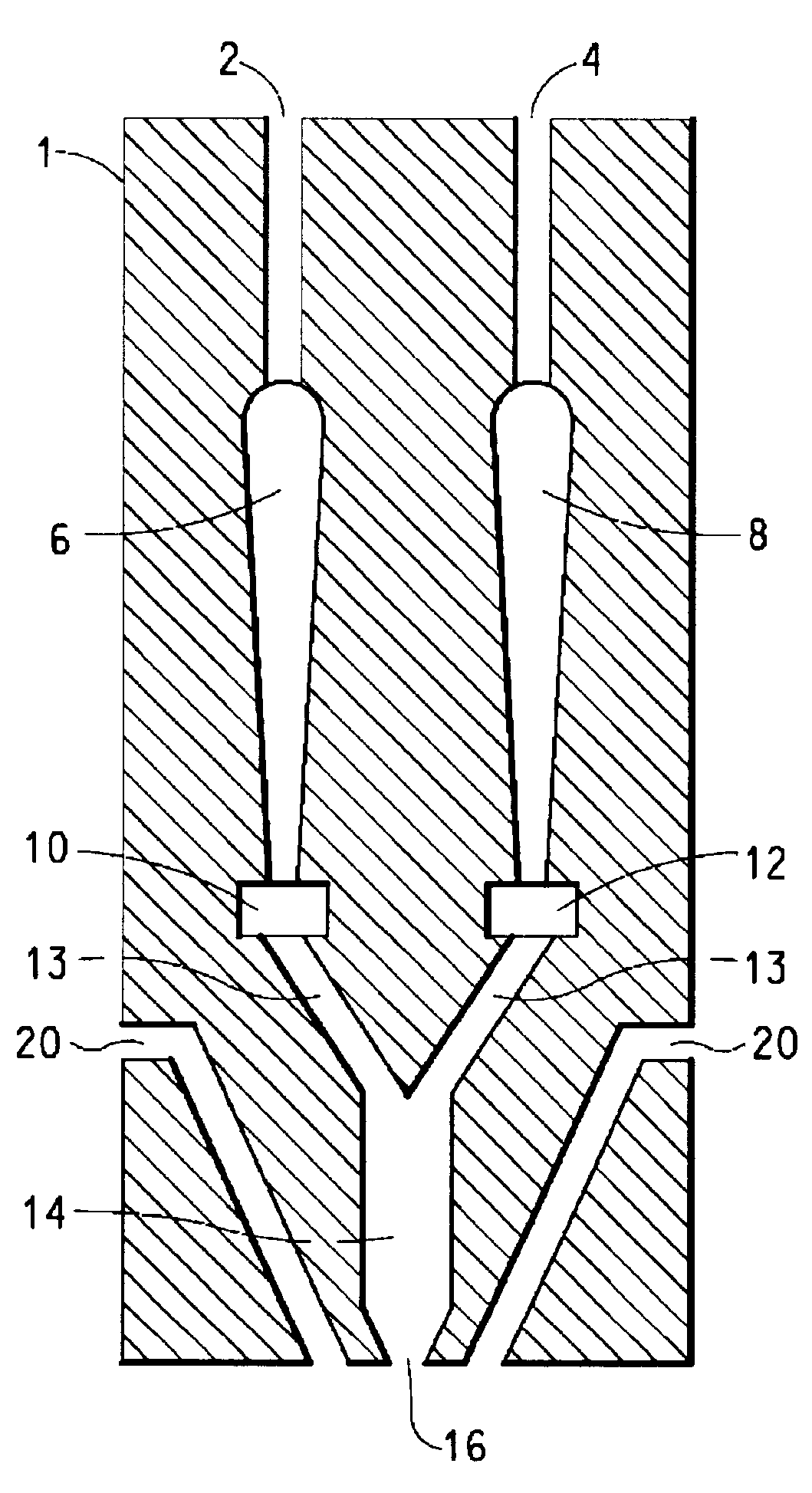Process and apparatus for making multi-layered, multi-component filaments
a multi-component, process and apparatus technology, applied in the direction of melt spinning methods, applications, manufacturing tools, etc., can solve the problems of significant number of spinneret orifices, non-uniform filament production of hole dies, and reducing the capacity for downstream filtering, so as to reduce or eliminate unwanted particulate passing
- Summary
- Abstract
- Description
- Claims
- Application Information
AI Technical Summary
Benefits of technology
Problems solved by technology
Method used
Image
Examples
example 1
A meltblown bicomponent web was made from melt blown fibers with a polyethylene component and a poly(ethylene terephthalate) component. The polyethylene component was made from linear low density polyethylene with a melt index of 135 g / 10 minutes available from Equistar as GA594. The polyester component was made from poly(ethylene terephthalate) with an intrinsic viscosity of 0.53 available from E. I. duPont de Nemours and Company as Crystar.RTM. polyester (Merge 4449). The polyethylene polymer was heated to 260.degree. C. and the polyester polymer was heated to 305.degree. C. in separate extruders. The two polymers were separately extruded and metered to two independent coat hanger-type polymer distributors. The planar melt stream exiting each distributor were filtered independently and then combined in a bicomponent meltblowing die to provide a side-by-side filament cross section. The die was heated to 305.degree. C. The die had 645 capillary openings arranged in a 54.6 cm line. T...
example 2
A web was made according to the procedure in Example 1 except that the polyester component contained 0.05 percent blue pigment (11582-F25 Blue Phthalo available from Americhem, Inc.). The pigment was introduced with an additive feeder to the extruder throat in a 25 percent concentrate form where the base material was DuPont Crystar.RTM. (Merge 4449). The meltblown web had a basis weight of 17 g / m.sup.2. No significant difference in processibility was observed due to the presence of the pigment.
Filtering of the planar molten polymer flowstreams resulted in the virtual elimination of plugging of the spinneret exit orifices, thus enhancing uniformity of the nonwoven webs formed, and extending the up-time of the spinning system.
PUM
| Property | Measurement | Unit |
|---|---|---|
| pressure | aaaaa | aaaaa |
| temperature | aaaaa | aaaaa |
| length | aaaaa | aaaaa |
Abstract
Description
Claims
Application Information
 Login to View More
Login to View More - R&D
- Intellectual Property
- Life Sciences
- Materials
- Tech Scout
- Unparalleled Data Quality
- Higher Quality Content
- 60% Fewer Hallucinations
Browse by: Latest US Patents, China's latest patents, Technical Efficacy Thesaurus, Application Domain, Technology Topic, Popular Technical Reports.
© 2025 PatSnap. All rights reserved.Legal|Privacy policy|Modern Slavery Act Transparency Statement|Sitemap|About US| Contact US: help@patsnap.com


